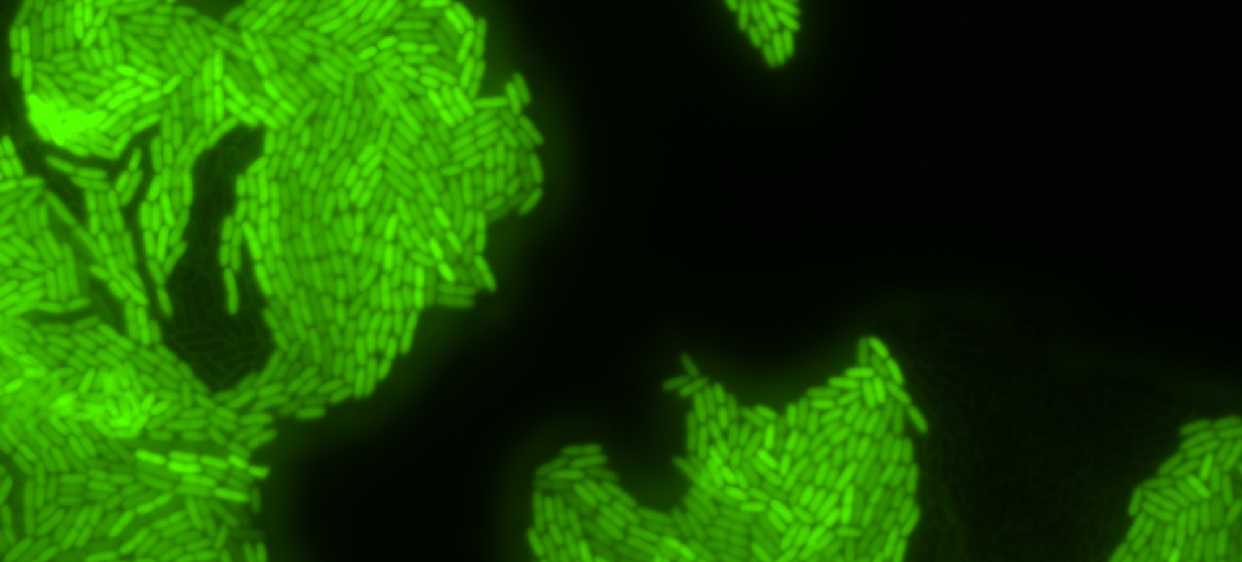Biological Applications
We develop quantitative models of biological networks and use them to help address key questions in biology. How do living systems achieve biological function robustly in an uncertain and noisy environment? What are the role of dynamics and feedback? What are the fundamental limitations? Are there design principles? We study bacteria, yeast, and mammalian systems.
Population-level entrainment: A noise-induced mechanism
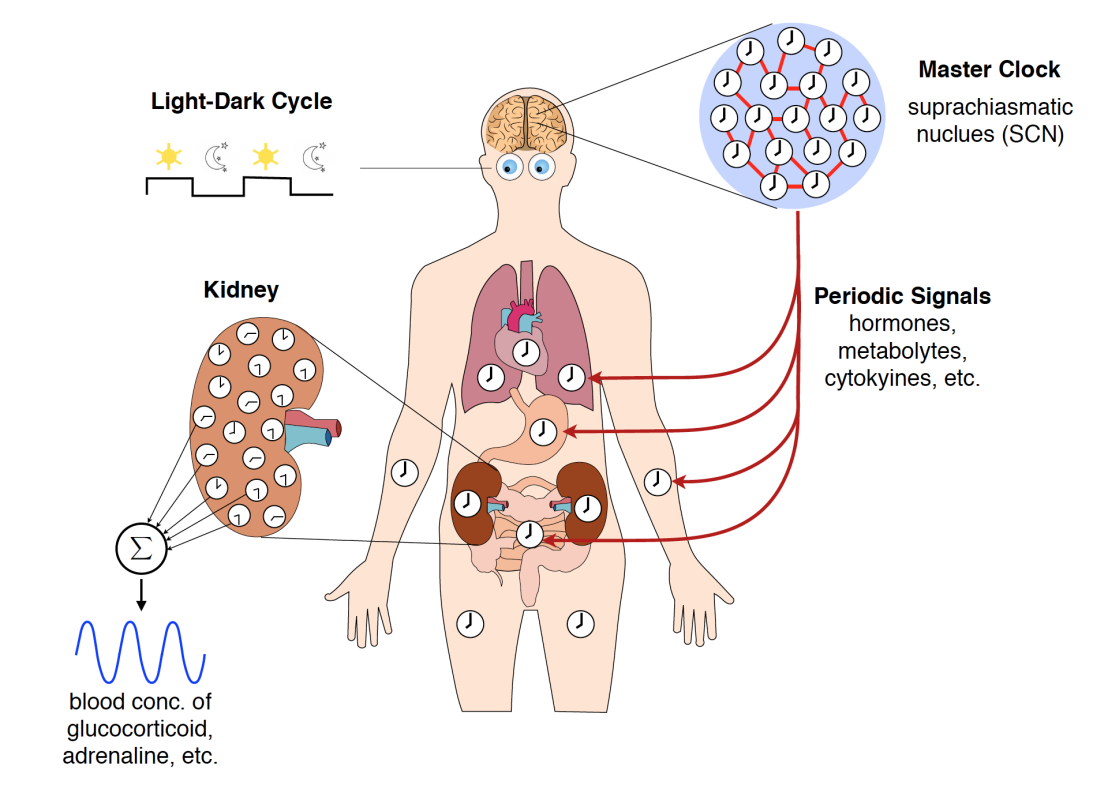
Intracellular oscillators play a vital role in regulating a large number of biological processes. It is often important for these oscillators to entrain to a periodic signal by appropriately adjusting their phase and frequency. However, the low copy number of key molecular players makes the dynamics of such oscillators intrinsically noisy, causing disruption in their oscillatory activity and the entrainment response of individual oscillators. In this context we have discovered a surprising noise-induced phenomenon, which we call stochastic population entrainment (SPE), which exploits intrinsic biochemical noise to confer robustness to the entrainment response of the population-averaged response of several independent oscillators. We have computationally verified that SPE occurs in a wide range of oscillators and also observed it in the experimental data recently obtained for the oscillatory dynamics of nuclear localization of the NF-kB transcription factor. These findings suggest a novel biological function of intrinsic noise, which could explain how the central pacemaker in the brain’s suprachiasmatic nuclei (SCN) can reliably entrain noisy peripheral circadian clocks at the tissue-level due to SPE, by passing weak periodic signals through neuronal and humoral pathways.
A. Gupta, B. Hepp and M. Khammash, “Noise Induces the Population-level Entrainment of Incoherent, Uncoupled Intracellular Oscillators”, Cell Systems, 3 (6): 521-531.e13, Cambridge, MA: Cell Press, 2016. external page Article
Effects of dynamic disorder in the enzymatic activity
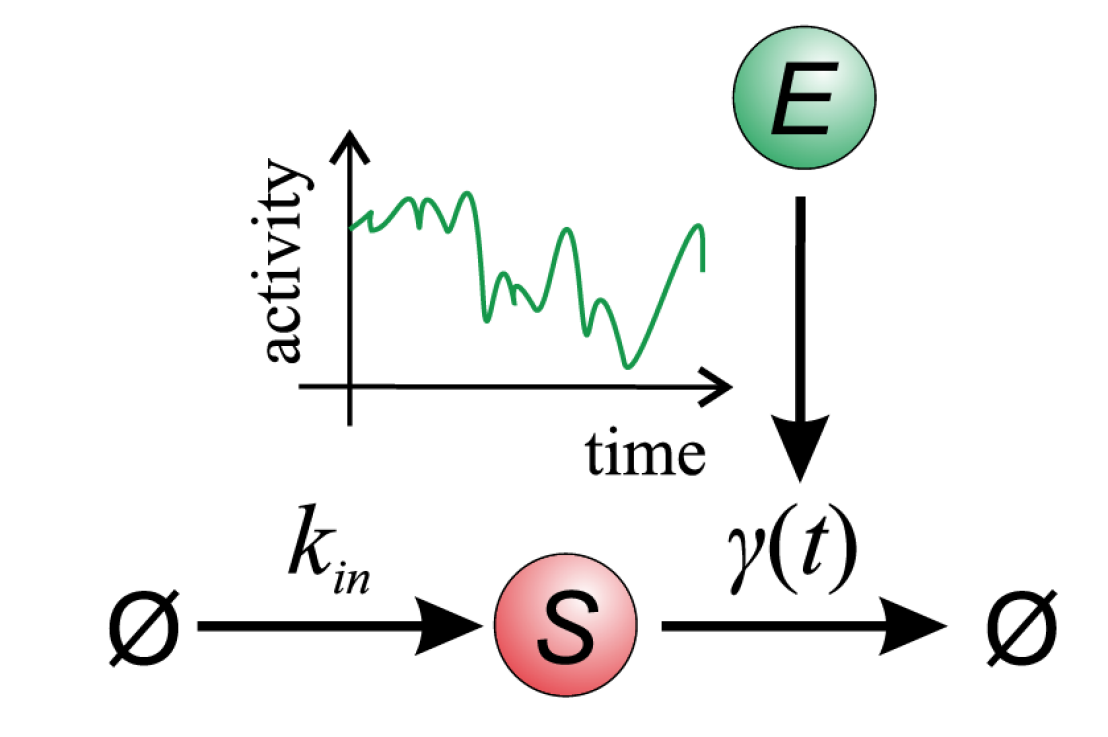
The rate at which an enzyme catalyses the conversion of a substrate into a product can be highly variable due to conformational fluctuations in the enzyme molecules. This phenomenon is called dynamic disorder and it has been recently observed experimentally using single-molecule enzymology techniques. The biological significance of this phenomenon in a system with a small number of enzymes such as a living cell, is poorly understood. Currently we are working towards mathematically examining the affect of these enzymatic fluctuations on the mean level of the substrate or product abundance at steady-state. We have derived an explicit formula that connects the relative speed of enzymatic fluctuations and the mixing properties of the fluctuation process, with the the mean substrate level. Under fairly general modelling assumptions, we can demonstrate that enzymatic fluctuations can have a very dramatic effect on the mean substrate level, and lead to large positive deviations from predictions based on the assumption of deterministic enzymatic activity. We hope that as the techniques of single-molecule enzymology evolve, it may soon be possible to quantitatively study the enzymatic activity fluctuations within living cells. Our findings can then be used to formulate testable experimental hypotheses regarding the nature and magnitude of these fluctuations, as well as their phenotypic consequences.
Ankit Gupta, Andreas Milias-Argeitis and Mustafa Khammash. "Dynamic disorder in simple enzymatic reactions induces stochastic amplification of substrate," Journal of The Royal Society Interface, 14 (132): 20170311, London: Royal Society, 2017. doi:10.1098/rsif.2017.0311 external page Article
Cell Lineage Branching: A Proliferative Control Strategy
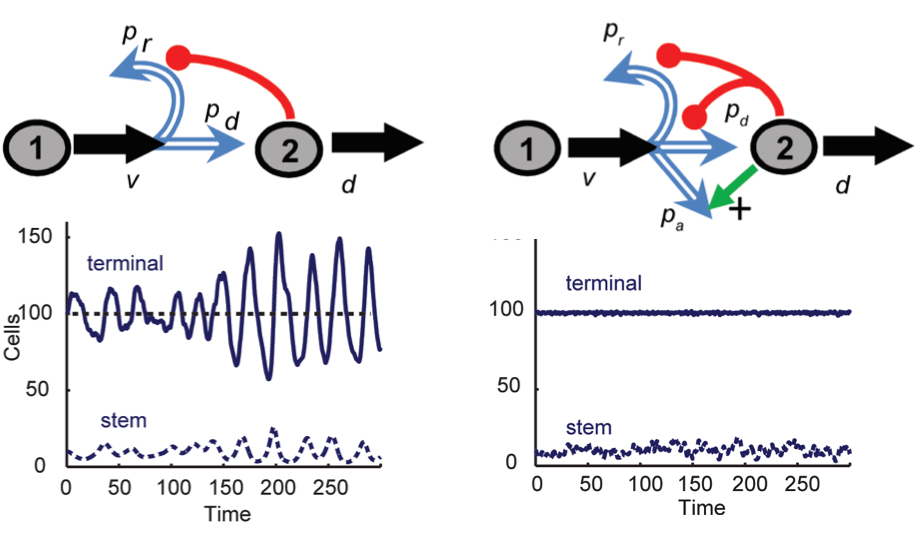
The strategies used by tissues and organs to control their sizes are poorly understood. A simple form of lineage feedback has been shown previously to achieve stability and some form of robustness. Using results from control theory that establish the fundamental limitations of certain feedback systems, we show that the simple lineage feedback architecture is doomed to fail in the face of certain kinds of biological disturbances. However, a feedback strategy aimed at promoting lineage branching overcomes these limitations, and may explain why regulated lineage branching is commonly observed in both developing and self-renewing tissues.
Gentian Buzi, Arthur D. Lander and Mustafa Khammash. "Cell lineage branching as a strategy for proliferative control," BMC Biology, 13 (1): 13, London: BioMed Central, 2015. external page Article
NFkB Response in Microglia
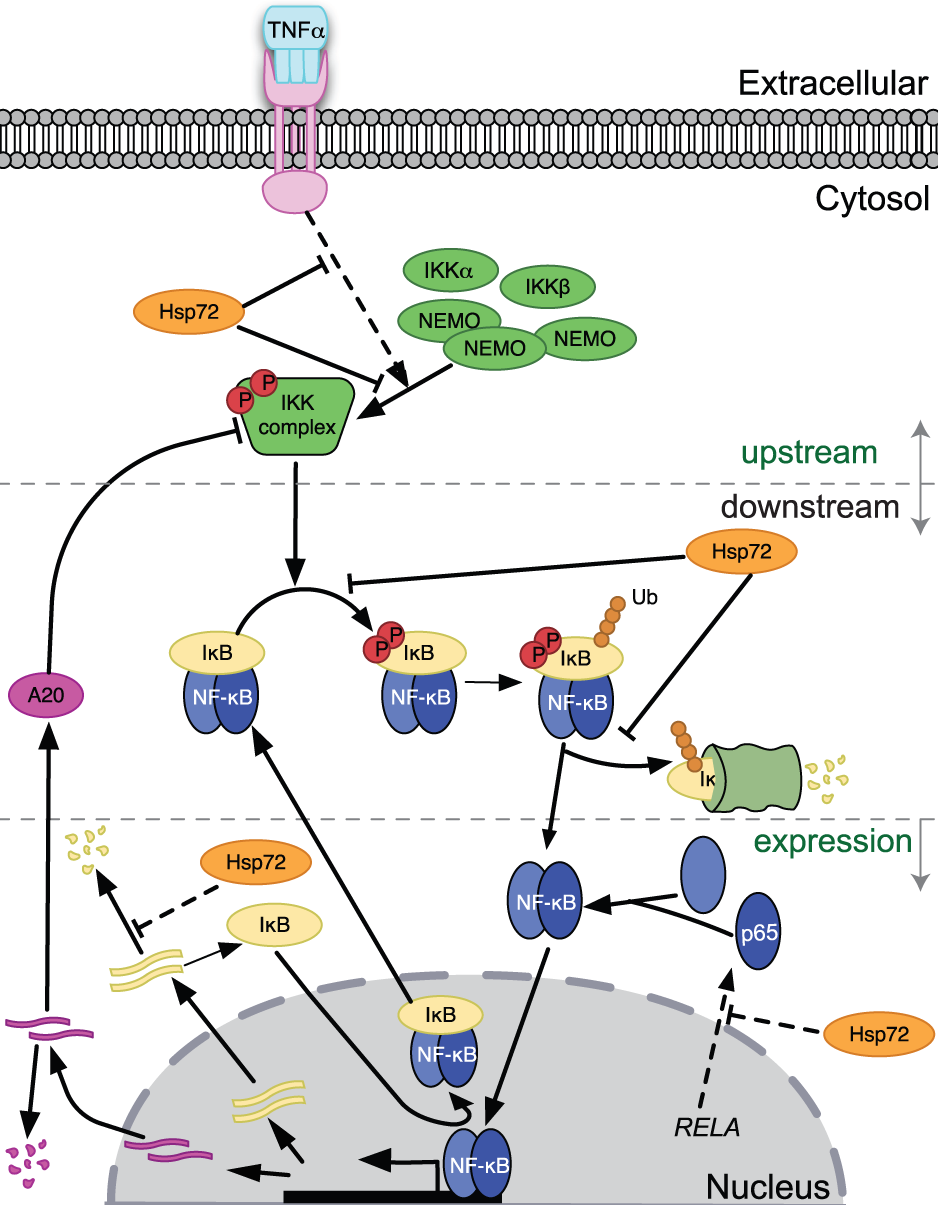
We quantify the dynamic response of NF-κB activation and activation of the upstream kinase IKK using ELISA measurements of a microglial cell line following treatment with the pro-inflammatory cytokine TNFα. A new mathematical model is developed based on these data sets using a modular procedure that exploits the feedback structure of the network. We show that the new model requires previously unmodeled dynamics involved in the stimulus-induced degradation of the inhibitor IκBα in order to properly describe microglial NF-κB activation in a statistically consistent manner.
P. Sheppard, X. Sun, M. Khammash, and R. Giffard, "Overexpression of heat shock protein 72 attenuates NF-κB activation using a combination of regulatory mechanisms in microglia," PLoS Comput Biol, 10(2): e1003471, 2014. external page DOI
P. Sheppard, X. Sun, J. Emery, R. Giffard, and M. Khammash, "Quantitative characterization and analysis of the dynamic NF-kappaB response in microglia", BMC Bioinformatics, 12:276, 2011. external page DOI
Identification of Signal-Activated Stochastic Gene Regulation in Yeast

Although much has been done to elucidate the biochemistry of signal transduction and gene regulatory pathways, it remains difficult to understand or predict quantitative responses. We integrate single-cell experiments with stochastic analyses, to identify predictive models of transcriptional dynamics for the osmotic stress response pathway in Saccharomyces cerevisiae. We generate models with varying complexity and use parameter estimation and cross-validation analyses to select the most predictive model. This model yields insight into several dynamical features, including multistep regulation and switchlike activation for several osmosensitive genes. Furthermore, the model correctly predicts the transcriptional dynamics of cells in response to different environmental and genetic perturbations. Because our approach is general, it should facilitate a predictive understanding for signal-activated transcription of other genes in other pathways or organisms.
G. Neuert, B. Munsky, R. Z. Tan, L. Teytelman, M. Khammash, and A. van Oudenaarden, "Systematic Identification of Signal-Activated Stochastic Gene Regulation," Science, 339 (6119), 584-587, 2013. external page DOI
Cell Polarity in Yeast
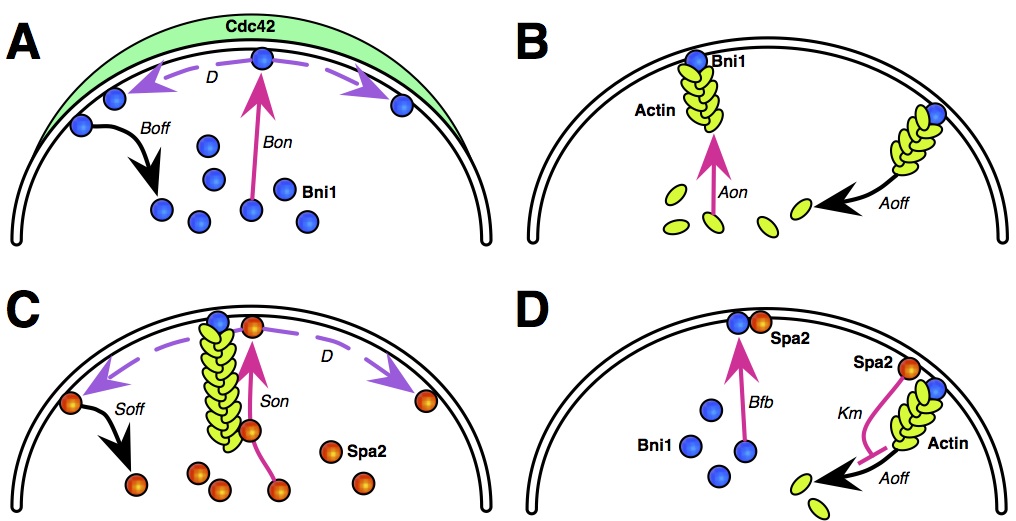
Cell polarity is the fundamental process of breaking symmetry to create asymmetric cellular structures. It is an open question how randomness (stochasticity) in the cell hinders or helps cell polarity. In this work, we focus on the ability of yeast cells to sense a spatial gradient of mating pheromone and respond by forming a projection in the direction of the mating partner. A key element is the polarisome, which is at the tip of the mating projection. We introduce the first model of polarisome formation in yeast. The model is well-supported by experimental data. We perform modeling to explore the role of noise in the formation of the polarisome. By running simulations with and without noise, we arrive at the surprising conclusion, that gradient-dependent polarization is enhanced by stochasticity. Both the tight localization (amplification) and the ability to respond to directional change of the input (tracking) are enhanced by stochastic dynamics, resulting in a more robust behavior. Mutants in which key polarisome proteins have been deleted exhibit broader, noisier polarisome than the wild type. The mutant phenotype is accurately captured by our stochastic simulations. These results demonstrate the importance of stochasticity in the study of cell polarity.
M. Lawson, B. Drawert, M. Khammash, L. Petzold, and T-M. Yi, "Spatial Stochastic Dynamics Enable Robust Cell Polarization," PLoS Comput Biol 9(7): e1003139, 2013. external page DOI
Phosphate Starvation Response
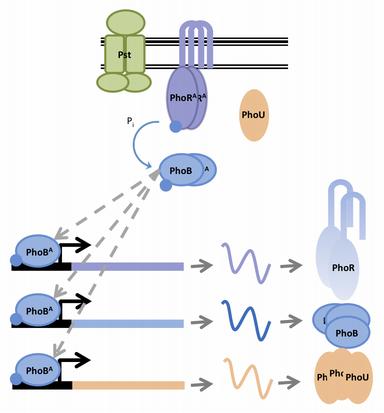
The cell relies on inorganic phosphate (Pi) as the main source of the essential nutrient phosphorus. Phosphate starvation response is initiated when a signal transduction pathway, the PhoR-PhoB two-component system (TCS), is activated in response to lack of extracellular Pi. This will lead to pre-programmed changes in gene expression as part of the cell’s adaptation to phosphate starvation. We are developing and analyzing mathematical models that match the current experimental data, and also lead to a deeper understanding of the system’s behavior (both stochastic and deterministic). This will be used to get insight into the general features of other TCS signaling systems and to guide the design of new experiments in the E. coli K-12 model cell (where this system is best understood).
Pap Pili Stochastic Epigenetic Switch
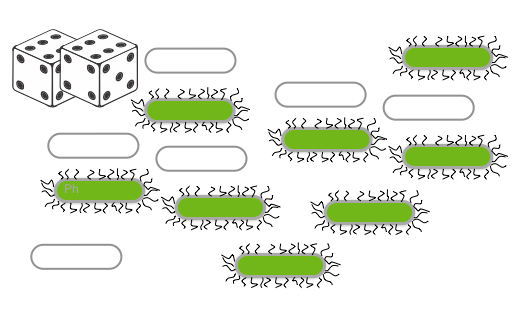
We have been developing a new stochastic model for the study of the Pap pili epigenetic switch in Escherichia Coli. The model focuses on the period immediately following DNA replication during which the cell’s fate is decided as a result of a few critical stochastic chemical reactions. Gene methylation and protein-gene binding events are modeled as Markovian state transitions through which the Pap gene can reach any of 64 distinct epigenetic configurations; some of which allow for the production of the feedback regulator PapI. These patterns are composed with an infinitely variable PapI population level for an infinite number of possible system states. The resulting Chemical Master Equation is analytically approximated using the Finite State Projection method and compared with experimental data involving variations in the concentration of DNA adenine methylase. The model successfully captures all experimentally observed traits, and makes strong predictions that currently being tested in David Low’s lab at UCSB.
B Munsky, A Hernday, D Low, M Khammash, "Stochastic modeling of the pap-pili epigenetic switch," Proc. FOSBE, 145-148, 2005. external page DOI
Bacterial Contact Dependent Inhibition
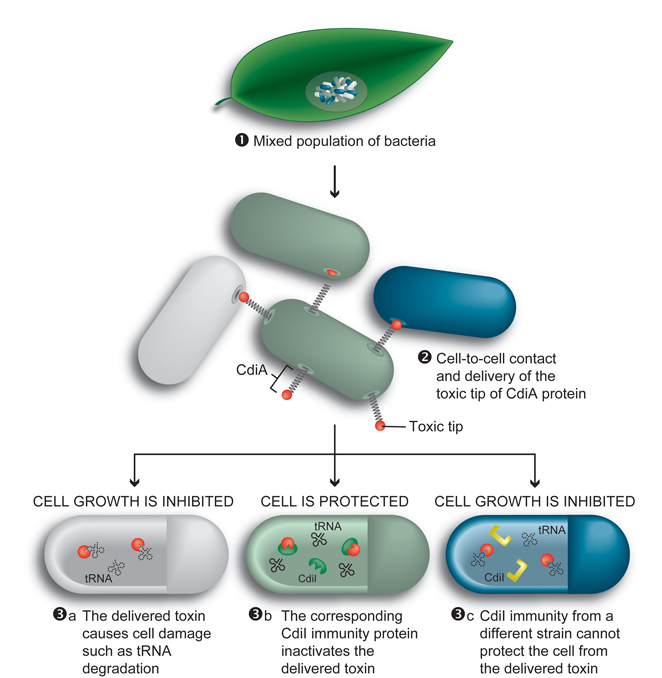
Contact-dependent growth inhibition (CDI) is a phenomenon in which one cell can inhibit the growth of another cell upon direct cell-to-cell contact. This system, originally described in 2005 in a rat fecal isolate of Escherichia coli (EC93), consists of an outer-membrane toxin protein (CdiA), its corresponding outer-membrane transporter (CdiB), and a cognate immunity (CdiI). Recently, CDI systems have been identified in various pathogens including uropathogenic E. coli (urinary tract infection), Yersinia pestis (plague), and Dickeya dadantii (plant soft-rot). However, unlike EC93, these systems are not constitutively expressed. Preliminary data suggests that inhibitory activity is controlled by as yet unknown environmental cues. Current work involves the study of CDI regulation with the goal of understanding the role it plays in cell-to-cell communication and competition.
Aoki S.K., Poole S.J., Hayes C.S., Low D.A. 2011. "Toxin on a stick: Modular CDI toxin delivery systems play roles in bacterial competition." Virulence, 2(4):356-359. external page DOI
Aoki S.K., Diner E.J., t’Kint de Roodenbeke C., Burgess B.R., Poole S.J., Braaten B.A., Jones A.M., Webb J.S., Hayes C.S., Cotter P.A., Low D.A. 2010. "A widespread family of polymorphic contact-dependent toxin delivery systems in bacteria." Nature, 468:439-442. external page DOI
Hayes C.S., Aoki S.K., Low D.A. 2010. "Bacterial contact-dependent delivery systems." Annual Review of Genetics, 44:71-90. external page DOI
Aoki S.K., Pamma R., Hernday A., Bickham J., Braaten B.A., Low D.A. 2005. "Contact-dependent inhibition of growth in Escherichia coli." Science, 309:1245-1248. external page DOI
Bacterial Heat Shock Response
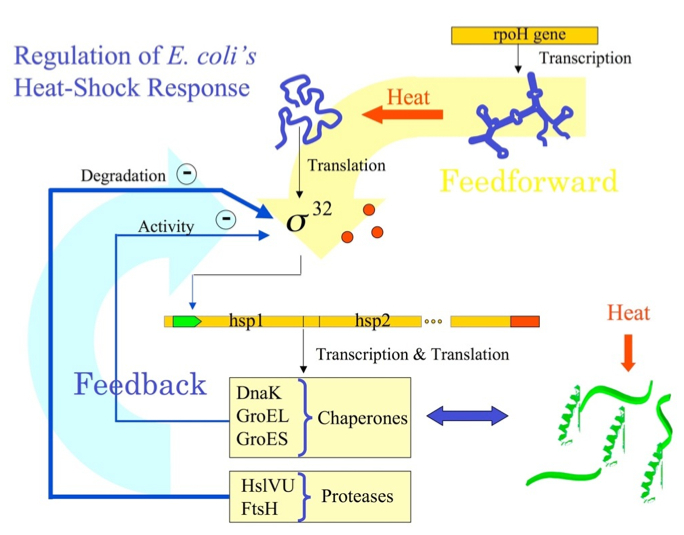
What lies behind the complexity of biological networks? We attempt to answer this question by using a control theory approach to explore the exquisite architecture of a well known cellular stress system: the bacterial heat-shock response. The heat shock response is a mechanism for dealing with cellular stress resulting from the denaturation of cellular proteins. The response is characterized by the up-regulation of the heat shock proteins (HSPs) and is regulated directly by alterations in the level, activity, and stability of the sigma factor sigma-32. The logic of the heat shock response is implemented through a hierarchy of feedback and feedforward control architectures that regulate both the amount of sigma-32 and its functionality. We have developed a dynamic model that captures known aspects of the heat shock system and are using it to exploring the logic of the heat shock response from a control theory perspective, drawing comparisons to control systems in engineering.
H. El-Samad, H. Kurata, J. C. Doyle, C. Gross, and M. Khammash, "Surviving Heat Shock: Control Strategies for Robustness and Performance," Proceedings of the National Academy of Sciences (PNAS), Vol. 102, No. 8, pp. 2736-2741, 2005. external page DOI
H. Kurata, H. El-Samad, R. Iwasaki, H. Ohtake, J. C. Doyle, I. Grigorova, C. Gross, and M. Khammash, "Module-Based Analysis of Robustness, Tradeoffs in the Heat Shock Response System," PLoS Comuptational Biology, 2006. external page DOI
M. Khammash, "Reverse Engineering: The Architecture of Biological Networks," Bio Techniques, Vol. 44, No. 3, pp. 323-329, March 2008. external page DOI
Calcium Homeostasis
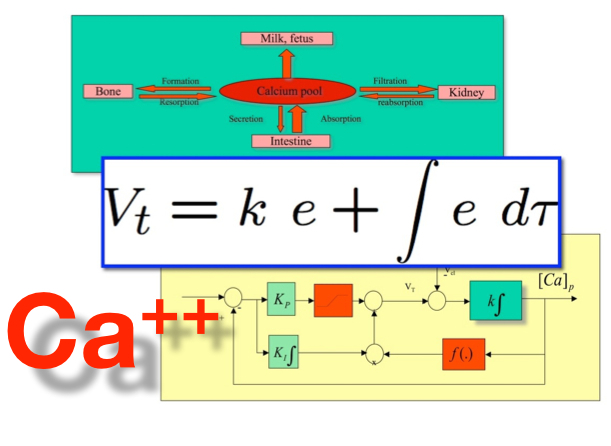
Calcium is tightly regulated in mammals because of the critical role of calcium ion concentrations in many physiological functions. In this work, we develop a model for calcium homeostasis and identify integral feedback control as a functional module that maintains this homeostasis. We argue that maintaining calcium concentrations in a narrow range and perfect adaptation seen when the calcium homeostatic mechanism is subjected to extreme disturbances are the result of a feedback control system implementing integral control through specific interactions of the regulating hormones. Based on the constraints imposed by the suggested integral control, we arrive at a simple dynamical model for calcium homeostasis. We show that the model is biologically plausible and is consistent with known physiology. Furthermore, the utility of the integral-feedback model is revealed by examining an extreme calcium perturbation, parturient paresis in dairy cows.
H. El-Samad, J. Goff and Mustafa Khammash, "Calcium Homeostasis and Parturient Hypocalcemia: An Integral Feedback Perspective," Journal of Theoretical Biology, Vol. 17, No. 29, p. 214, 2002. external page DOI
